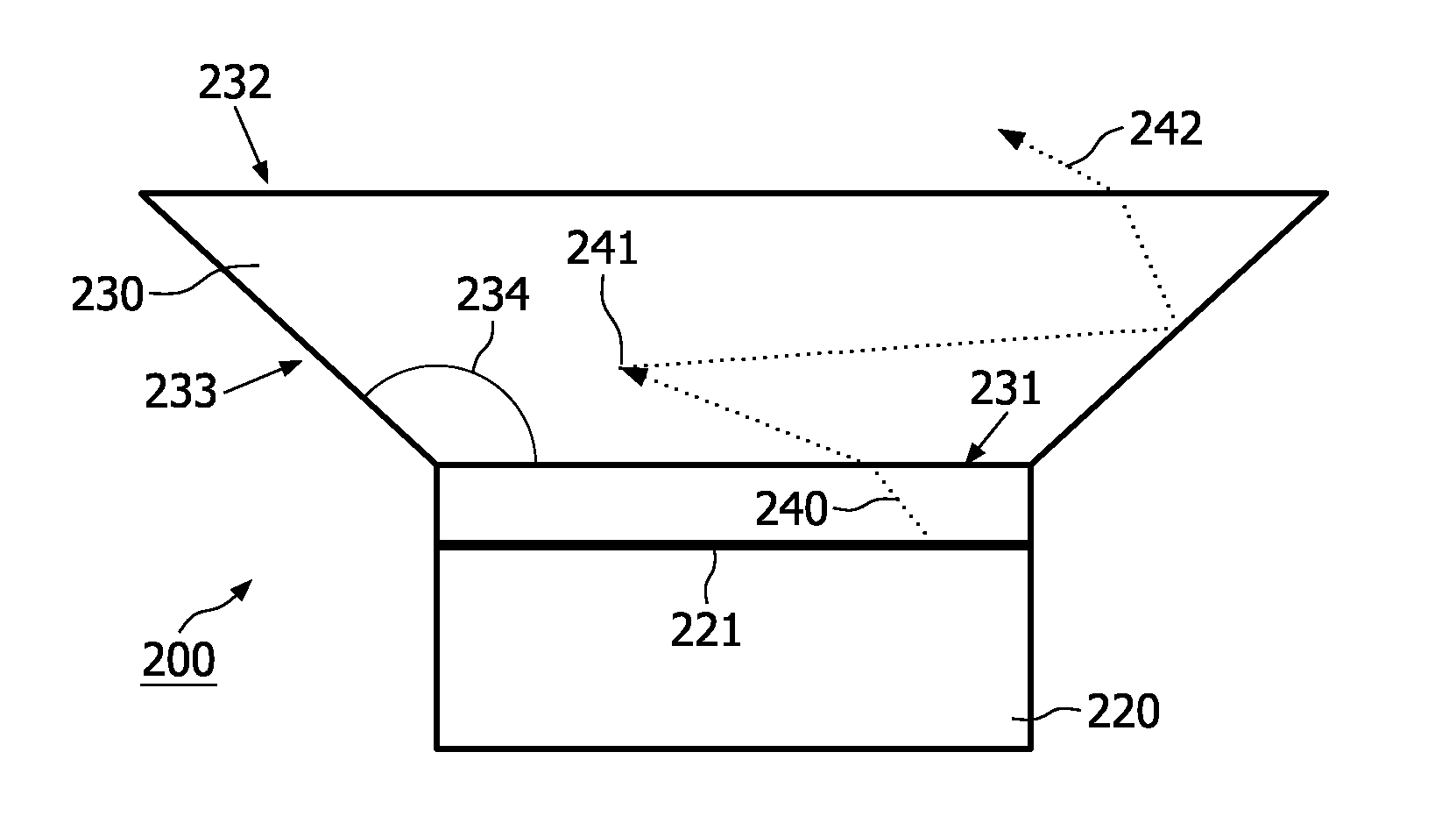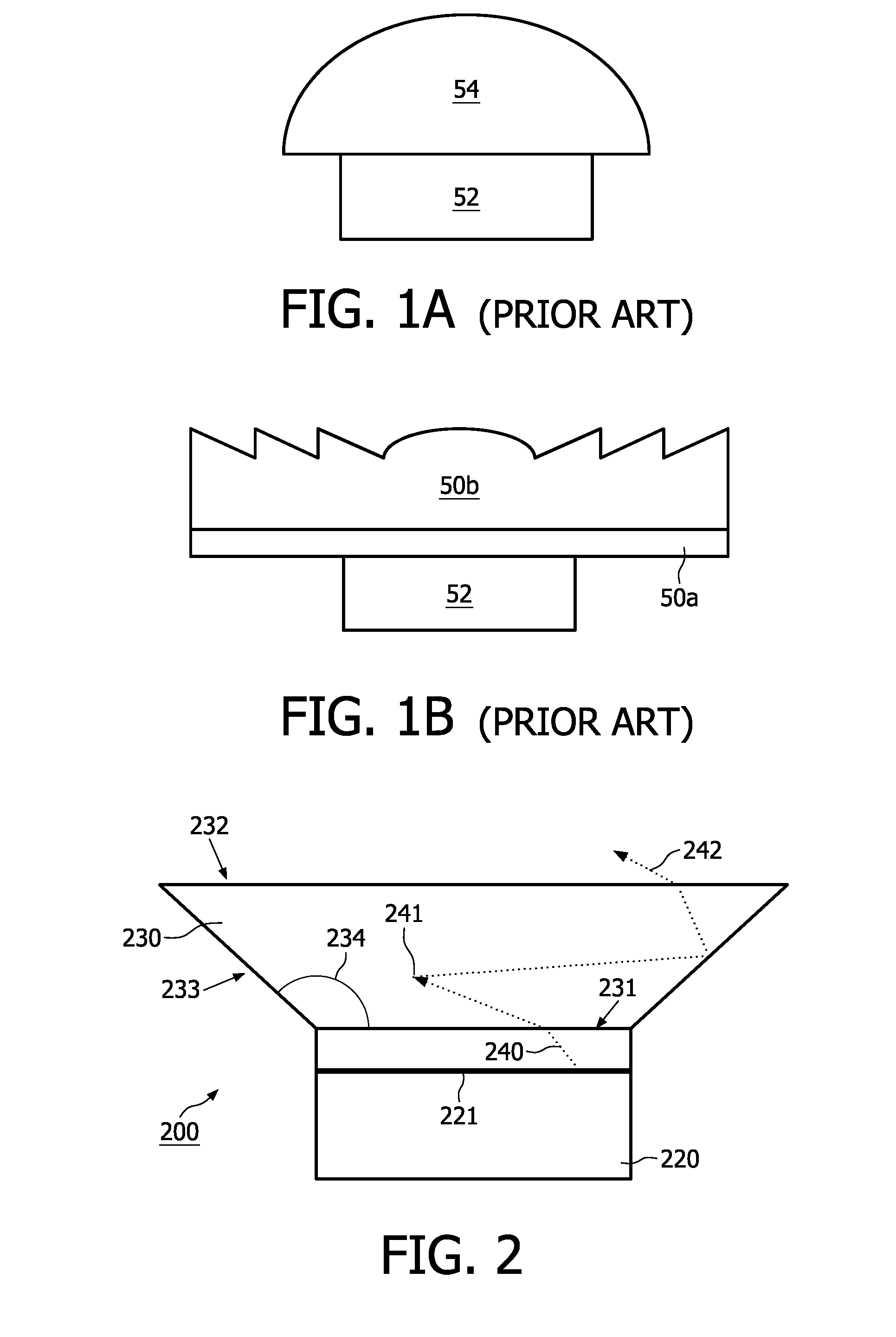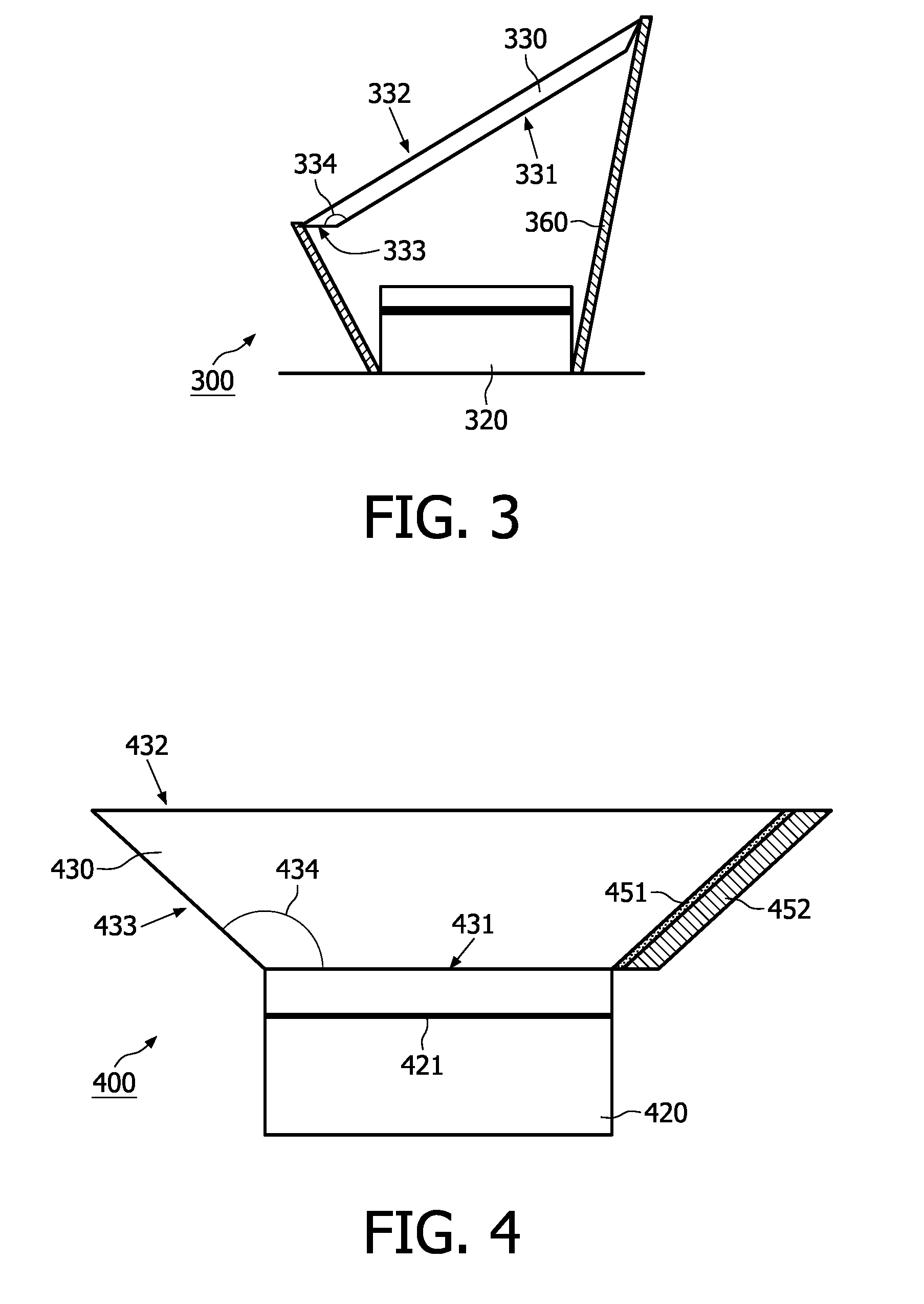Light-emitting apparatus with shaped wavelength converter
a technology of light-emitting apparatus and wavelength converter, which is applied in the direction of electrical apparatus, semiconductor devices, instruments, etc., can solve the problems of not being able to use in étendue critical applications, not being able to use light in the application of light-emitting apparatus, and being unable to achieve the effect of enhancing the light output of the luminescent ceramic body
- Summary
- Abstract
- Description
- Claims
- Application Information
AI Technical Summary
Benefits of technology
Problems solved by technology
Method used
Image
Examples
Embodiment Construction
[0024]FIGS. 1A and 1B show two examples of a light-emitting apparatus comprising a semiconductor light-emitting device 52 and a ceramic wavelength conversion body 54, 50a, 50b as known from US2005 / 0269582. In FIG. 1A the ceramic wavelength converting body 54 is shaped to form a dome lens. In FIG. 1B a second ceramic wavelength converting body 50b is shaped to form a Fresnel lens and located on top of a first rectangular ceramic wavelength converting body 50a. The lens shape of the body 54, 50b in the prior art should avoid total internal reflection (TIR) at the interface between the high index of refraction body and the low index of refraction air. The TIR is avoided (or at least minimized) by shaping the lens 54 with a radius of curvature considerably larger than the light-emitting device 52. It is clear, however, that in both embodiments of FIG. 1 TIR still occurs—and consequently locking of light in wave guide modes—even at the shaped surfaces of the ceramic wavelength conversion...
PUM
| Property | Measurement | Unit |
|---|---|---|
| oblique angle | aaaaa | aaaaa |
| oblique angle | aaaaa | aaaaa |
| oblique angle | aaaaa | aaaaa |
Abstract
Description
Claims
Application Information
 Login to View More
Login to View More - R&D
- Intellectual Property
- Life Sciences
- Materials
- Tech Scout
- Unparalleled Data Quality
- Higher Quality Content
- 60% Fewer Hallucinations
Browse by: Latest US Patents, China's latest patents, Technical Efficacy Thesaurus, Application Domain, Technology Topic, Popular Technical Reports.
© 2025 PatSnap. All rights reserved.Legal|Privacy policy|Modern Slavery Act Transparency Statement|Sitemap|About US| Contact US: help@patsnap.com



